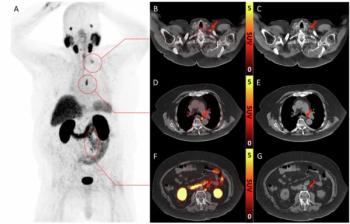
SWIFT MRI Teases Out Jawbone Cancer
A magnetic resonance imaging technique called SWIFT (sweep imaging with Fourier transform) can help detect oral cancer in the jawbone, according to a report in the September issue of Archives of Otolaryngology–Head and Neck Surgery, a JAMA/Archives journal.
A magnetic resonance imaging technique called SWIFT (sweep imaging with Fourier transform) can help detect oral cancer in the jawbone, according to a
Advanced squamous cell carcinoma that arises in the oral cavity frequently invades the jawbone, or mandible. But detecting bone invasion has been difficult with traditional CT and MR imaging techniques. Determining mandibular invasion with a high degree of accuracy before surgery might allow the surgeon to contain the cancerous cells, prevent unnecessary mandible removal and aid in planning for reconstruction, the authors said.
The team investigated SWIFT MRI for mandibular invasion by squamous cell carcinoma. The method offers delineated assessment of cortical (compact bone which forms the outer shell of some structures) and medullary (inner cavity where marrow is stored) bone, “which is not possible with conventional imaging techniques,” University of Minnesota researchers wrote.
Ayse Tuba Karagulle Kendi, MD, and colleagues studied patients with oral carcinoma who underwent segmental mandibulectomy. The researchers used a 9.4-T Varian MRI system to examine two specimens from each patient for cortical and medullary invasion by cancer cells. Histologic sections (specimens examined with a microscope) were compared with the images obtained by the SWIFT technique.
Images produced by the SWIFT technique with in vitro specimens were of sufficient resolution (156 to 273 micrometers) to accurately depict tumor invasion of cortical and medullary bone. Evidence of mandibular invasion with tumor was found in both specimens by histopathology. Researchers found a high degree of correlation between magnetic resonance images and histopathologic findings.
“This preliminary report demonstrates that the SWIFT imaging technique has the capacity to show fine details of intramandibular anatomy,” the authors concluded. “The data described in this report suggest that MRI has a great deal of potential in accurately determining bone invasion preoperatively.”
Newsletter
Stay at the forefront of radiology with the Diagnostic Imaging newsletter, delivering the latest news, clinical insights, and imaging advancements for today’s radiologists.

























